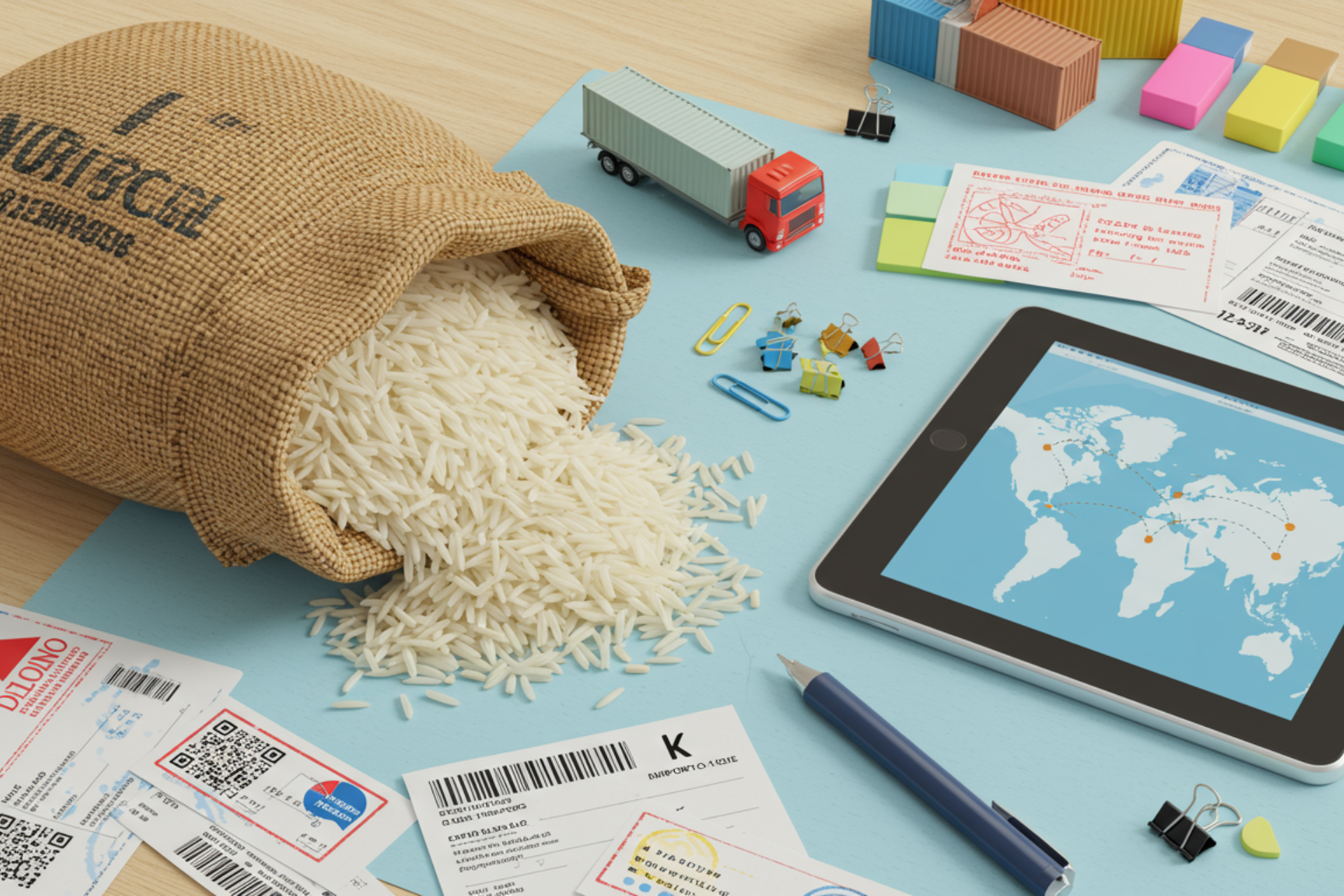
Importing rice might seem straightforward, but in reality, it’s a complex process involving multiple technical, regulatory, and financial layers. Whether you’re a wholesaler, retailer, or food processor, understanding these factors is crucial to avoid costly mistakes and ensure your rice import is profitable and compliant.
1. Understanding Rice Varieties and Quality Standards
Rice isn’t a single uniform product. There are numerous varieties, Basmati, Jasmine, Arborio, long grain, short grain and each serves different markets and culinary uses. Additionally, rice quality is judged by factors like grain length, moisture content, broken grain percentage, chalkiness, and aroma.
Before finalizing any order, ask for detailed specifications and, if possible, samples. This helps you ensure the product matches your market’s expectations and regulatory standards. For example, premium Basmati rice often requires less than 2% broken grains and moisture below 13%.
2. Validating Your Supplier
Not all suppliers are created equal. Rice trade has been plagued by scams and subpar products. Verifying supplier credibility is key. Look for exporters with international certifications such as ISO 22000 or HACCP and request references or trade histories. Factory audits by third-party inspectors like SGS add another layer of security.
Avoid suppliers who insist on full upfront payments without providing trade references or transparent documentation. Letters of Credit (LC) are safer for larger transactions.
3. Navigating Import Regulations and Documentation
Each country imposes specific rules on rice imports, including required permits, phytosanitary certificates, and labeling standards. Incorrect or missing documentation can cause shipment delays or seizures at customs.
Work closely with a customs broker who understands agricultural imports to ensure:
- Correct tariff codes are applied
- All licenses and permits are secured
- Phytosanitary and quality certificates meet destination requirements
4. Choosing the Right Incoterms
Incoterms define the responsibilities and risks between buyer and seller. Common ones in rice import include FOB (Free On Board), CIF (Cost, Insurance, and Freight), and DDP (Delivered Duty Paid).
For example, under FOB, the buyer arranges shipping and insurance from the port of origin, whereas CIF places these responsibilities on the seller. Understanding these terms helps avoid unexpected costs and clarifies who handles what during transit.
5. Ensuring Compliance with Safety and Quality Standards
Many countries have strict limits on pesticide residues, aflatoxins, and heavy metals in food imports. Non-compliance can result in shipment rejection or bans.
It’s vital to ensure your supplier follows Good Agricultural Practices (GAP) and that the rice is tested and certified free from harmful residues. This protects consumer safety and your brand reputation.
6. Planning for Proper Storage and Shelf Life
Rice is sensitive to moisture and pests. Improper storage during transit or at your facility can lead to mold growth or insect infestation, causing financial losses.
Use food-grade containers with moisture barriers and plan for dry, pest-controlled warehousing. This preserves rice quality and extends shelf life, especially important if you’re packaging for retail sale.
7. Managing Financial Risks and Payment Terms
Rice prices are often quoted in US dollars, exposing importers to currency fluctuations that can eat into profits. Consider negotiating payment terms like partial upfront payments and using Letters of Credit to minimize risk.
Currency hedging through your bank can also protect against adverse exchange rate movements.
Conclusion
Importing rice successfully is about more than just price. It requires detailed attention to product quality, regulatory compliance, supplier reliability, logistics, and financial risk management. With the right planning and partners, rice importing can be a lucrative venture with strong market demand.
VGI: Delivering premium rice to Oman and connecting global buyers with top-grade Indian and Pakistani rice, backed by deep industry expertise and quality.
When you partner with VGI, you gain access to:
- Consistent supply of certified, high-quality rice meeting international standards
- Reliable sourcing from trusted producers with full traceability
- Streamlined import documentation and compliance support to minimize delays
- Competitive pricing with transparent trade terms
- Expert guidance through shipping, customs, and storage logistics
Choose VGI for a hassle-free, trustworthy rice import experience designed to maximize your business success.